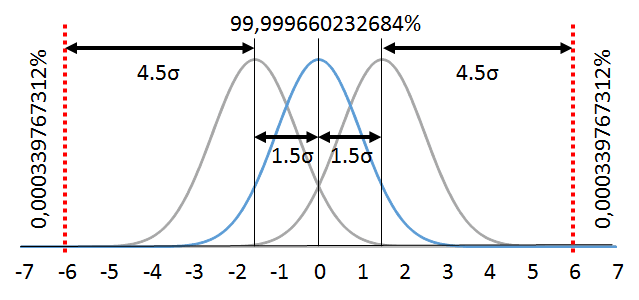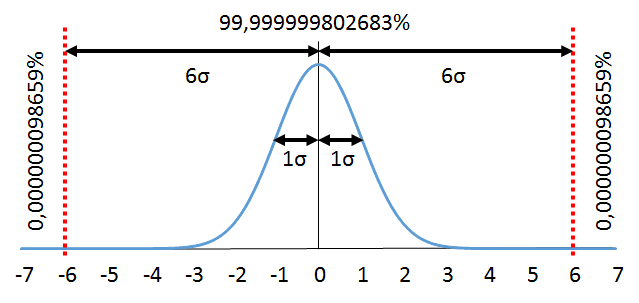Welcome to PMStack.Cafe Candidates Repo
Please read this document carefully before submitting your PMSC candidate challenge.
What Do You Need to Do?
-
Carefully read the
README.md -
Fork this repository
-
Create the
Kanban_youremail.mdMarkdown file in the forked repo and add3questions and answers (QAS) relevant to Kanban topic that you would ask on a real PM interview if you need to hire a real Scrum Master/Project Manager for your own team. Add QAS formatted as Markdown into theKanban_youremail.mdfile. -
All content must be formatted as valid Markdown (see examples below).
-
Make sure you'll add:
- one Junior difficulty question (simple questions to test basic knowledge)
- one Mid difficulty question for Middle PM positions, and
- one Senior question for Senior PM positions
-
Make sure that for all QAs you'll include:
- Question Title
- Question Description (optional)
- Answer (required)
- Link(s) to Sources (you don't need to write answer by yourself, just combine and research best sources that are available)
- QA Difficulty Level. Use that Difficulty enum: [
junior,mid,senior]
-
Look at the
QAS_Examples.mdfile in this repo for examples of QAS file formatting in Markdown. Use this file as a template for your submission. Please strictly follow these formatting conventions. This is the key to pass the challenge ;) -
Create a pull request from your repo into the PMSC Candidates repo. Name the PR as
SCRUM | youremail. PRs with different names will be rejected. -
Send us email or DM us on UpWork when you happy us to verify it
How To Choose/Write Good Interview Questions?
When choosing a good interview question follow these rules:
- The QA should not be too broad or too obvious/trivial, like:
- 🚫 What is
Scrum? - 🚫 What does a Scrum Master do all day?
- 🚫 What is
- The QA should be opened and invite the candidate for a conversation rather than strictly test his/her/their specific knowledge. Compare:
- 🚫 What is
Sprintin Scrum? - ✅ Provide some ways to fit bug fixing into a Scrum process. How would you fit it on an
Kanban Board? - ✅ What is the difference between Sprint and Iteration in Scrum and length of each Sprint?
- 🚫 What is
- Keep the answers short, succinct and informative. If you feel your answer is growing in size and covers different topics the split it!
- Avoid highly practical questions like
- 🚫 How best to do Agile Development in MS Project? - we won't accept that type of questions
- Don't submit behavioral questions like:
- 🚫 Describe your strengths and weakness, and so on
- Use that that types of questions:
- ✅
When to use X vs Y? - ✅
Why would you use X? - ✅
Compare X vs Y for solving Z - ✅
What types of X do you know? - ✅
Are there any problems when using X for solving Z? - ✅
Name some advantages of using X vs Y for solving Z? - ✅
Explain X to 5 yo/your grandparents - ✅
What is example of Y in real life? - ✅
Provide an intuitive explanation of X
- ✅
- The best rule of thumb to follow is
- ✅ ask yourself would you use this question on a real Agile Coach/Acrum Master/Project Manager interview? If answer is "Yes" then go for it!
Where To Find/Source Good Interview Questions?
Remember, you don't need to reinvent an interview question and the answer by yourself. Your task is to research the best sources that are available on the Internet (blog posts, books, videos, tutorials), combine, convert and (sometimes) reformat that existing knowledge into the answer.
There is just a fraction of quality resources you can do you research on:
- Books on Agile, Scrum, Kanban, PM, PMBOK
- scrumguides.org
- stackoverflow.com - 💡 Hint: sort questions by Score (or Votes) in search
- pm.stackexchange.com
- github repositories (with many stars, not forks)
- gitbooks.io
- atlassian.com
- monday.com
- pmi.org
- age-of-product.com
- pmhut.com
- thetaoofpm.blogspot.com
- etc...
💡 Hint: Don't blindly copy all answers from one source for the same topic. Try to find at least 2-3 source of the information and choose the best explanation you like most.
💡Hint: Search Github for pm interview questions repos that other people did. Usually they already formatted as Markdown and can get you great amount of QAS for the topic
💡Hint: When research on some topic look at the Table of Content in your favorite project management book to get a sense on what subtopics you can cover. Most of the Coursera and Udemy courses will work too!
Resources to AVOID
- onlineinterviewquestions.com
- geekforgeeks.com
- career.guru99.com
- educba.com
- edureka.co
- a4academics.com
- etc ...
How To Format Interview Questions + QAS Examples
All interview questions must be formatted using those rules:
- use ONLY Markdown (Github flavour)
- Do include images (include them as Markdown links) into your answers if they help to explain concepts you cover
- Do use and reformat original source of answer using lists, italic and bold for better readability
- Do include formatting in the QA title
- Do format the code (see samples)
See some examples of QA formatting below. Note how to format list, code, file names, terms, links, QA difficulties, images and so on. To see more QA formatting examples go to www.fullstack.cafe and explore this QAs library.
Q1: What is the difference between DMAIC and DMADV in Six Sigma?
Difficulty: Junior
Source:
Answer:
- DMAIC stands for: Define, Measure, Analyze, Improve, Control
- DMADV stands for: Define, Measure, Analyze, Design, Verify
Despite the first three shared letters of their names, there are some notable differences:
- DMAIC typically defines a business process and how it applies; DMADV defines customer needs as they relate to a service or product.
- DMAIC measures the current performance of a process, while DMADV measures customer specifications and needs.
- DMAIC focuses on making improvements to a business process to reduce or eliminate defects. DMADV develops an appropriate business model to meet customer requirements.
Q2: How do you deal with bugs or mistakes in Kanban? Would you move items back on a board?
Difficulty: Mid
Source:
https://pm.stackexchange.com/questions/3935/kanban-moving-items-back-or-how-do-you-manage-mistakes
Details:
Given that you have a feature tracking through your Kanban board, the dev marks it done, it's pulled into QA, and the dev pulls in new work. QA fails the item.
Now what? Would you move the item back to the Dev stage? What will you do if you can't move it back into the dev stream as it's full?
Answer:
My first advice would be to treat your QA stage as the one covering both: testing and bug fixing which basically renders the problem of moving index cards anywhere irrelevant. Developers work in the QA stage (same as testers) when they are fixing production defects.
I won't personally move cards back as it just adds a lot of hassle. You can have policies that you can violate limits in such situation but chaos introduced isn't worth the value.
Other options to consider might be:
- You may "park" features which didn't pass testing. You may have dedicated subcolumn where you put such features so everyone knows that they require bug-fixing.
- You may just visualize status of testing, e.g. testing started, testing passed, testing failed, with additional visual signal and keep the index cards in QA column.
- You may deal with bugs using additional information radiator, usually not a full-blown Kanban board. Then, again, you keep the index cards in QA stage but you deal with bugs independently.
Q3: What is the role of the 1.5 Sigma Shift?
Difficulty: Senior
Source: https://www.qualitydigest.com/inside/six-sigma-column/15-sigma-shift-explained-040406.html
Answer:
Experience has shown that processes usually do not perform as well in the long term as they do in the short term. As a result, the number of sigmas that will fit between the process mean and the nearest specification limit (SL) may well drop over time, compared to an initial short-term study. To account for this real-life increase in process variation over time, an empirically based 1.5 sigma shift is introduced into the calculation.
According to this idea, a process that fits 6 sigma between the process mean and the nearest specification limit in a short-term study will in the long term fit only 4.5 sigma – either because the process mean will move over time, or because the long-term standard deviation of the process will be greater than that observed in the short term, or both.
NOTE: With the introduction of the 1.5 Sigma Shift the "6 sigma" process will have long-term defect rates corresponding to 4.5 sigma performance rather than actual 6 sigma performance.
In practice, the 1.5 sigma shift results in the generally accepted six sigma value of 3.4 defects per million opportunities:
Ignoring the 1.5 sigma shift results in a six sigma value of 2 defects per billion opportunities:
How We Asses Your Work
Look at this list of criteria that we will keep in mind when assessing your submission:
- Variety and Quality of Sources you have used. We hard stop and reject your candidacy if you copy/source QAs from one source or sources mentioned to AVOID
- Markdown Formatting Quality - don't blindly copy answer, REformat it to increase readability, for example:
- Use paragraphs and new lines to visually separate different parts of the answer
- Use bold for terms and acronyms
- Use lists to visually separate different concepts especially if they presented in one long sentence in the source
- Use italic to stress attention on critical/important idea or concepts or hints for a reader
- Use italic in QA Title for terms and acronyms
- Use
codefor numbers:123, percentages:68%,file_names.mdand code<html/>in your answers - Don't write long QA Titles. Move additional information, problem statement or following questions to QA Details
- Inclusion of Images is very important
- Add context for QA when needed in Details section (aka Let's say we need to deploy backend on 5000 nodes simultaneously...)
- If you reference to some image in the answer make sure you reference it by its visible ID (A, B, C, ... 1, 2, 3 and etc.)
Useful Tools to Try
There are some awesome tools that will greatly help you along the way of content creation for FSC:
Markdown Extractors & Chrome Extensions
- Copycat Chrome/Brave Extension
- HTML to Markdown Converter
Markdown Editors
- VS Code + Markdown Extensions - recommended
- StackEdit.io
- Dllinger.io
VS Extensions
- Markdown All In One
- Markdown Preview Enhanced
- Markdownlint
I'm In! What's Next?
Great! Once getting your pull request we'll verify the content and circle back to you in no time. Then we schedule a Google Meet call and discuss your first PMSC topic to work on :)



